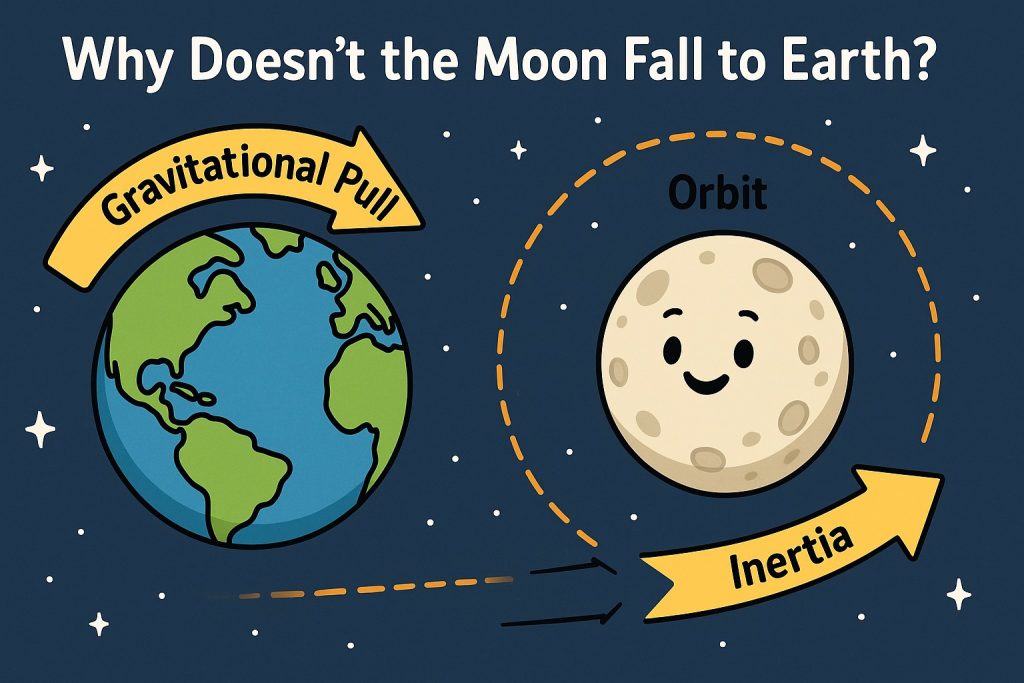At first glance, it might seem logical to assume that the Moon should eventually fall to Earth due to gravity. After all, gravity pulls objects toward each other—and the Earth is massive. But the Moon doesn’t crash into us. Instead, it remains in a stable orbit. Why?
The answer lies in the balance between gravitational pull and inertia—specifically, the centripetal force that keeps the Moon moving along a curved path.
Gravity Pulls, Motion Resists
The Earth’s gravity constantly pulls the Moon toward it, trying to draw it closer. At the same time, the Moon is moving sideways at a high speed—about 3,683 km/h (2,288 mph). This sideways motion causes the Moon to try to move in a straight line, but Earth’s gravity bends that path into a circle (actually an ellipse).
It’s like swinging a ball on a string. If you let go, the ball flies off straight. But if the string stays tight, it goes in a circle. The Moon’s orbital motion and Earth’s gravity work together to keep it falling around the Earth, not into it.
What Is an Orbit?
An orbit is the curved path one object takes around another due to gravity. The Moon is in free fall—constantly falling toward Earth, but always missing it because Earth curves away beneath it.
This is the same principle that keeps satellites in orbit. They’re falling—but also moving fast enough sideways that they never reach the ground.
What Would Make the Moon Fall?
In theory, if the Moon suddenly stopped moving sideways, Earth’s gravity would pull it straight down. But that’s practically impossible.
Conversely, if the Moon sped up too much, it could escape Earth’s gravity entirely and fly off into space.
Is the Moon’s Orbit Changing?
Yes—very slowly. Due to gravitational interactions, especially with Earth’s tides, the Moon is moving away from Earth at about 3.8 cm per year. This means its orbit is getting larger and slower over time.
In billions of years, this may affect Earth’s rotation and eclipse patterns, but it won’t make the Moon fall.
Glossary
- Gravity – The force that pulls objects toward each other.
- Inertia – The tendency of an object to keep moving in a straight line unless acted upon.
- Orbit – The curved path an object takes around another due to gravity.
- Free fall – When gravity is the only force acting on an object.
- Centripetal force – A force that keeps an object moving in a circular path.


